Emergency Roof Repairs: What to Do When Disaster Strikes
April , 2024 | 11 min. read
By Joe Martinez
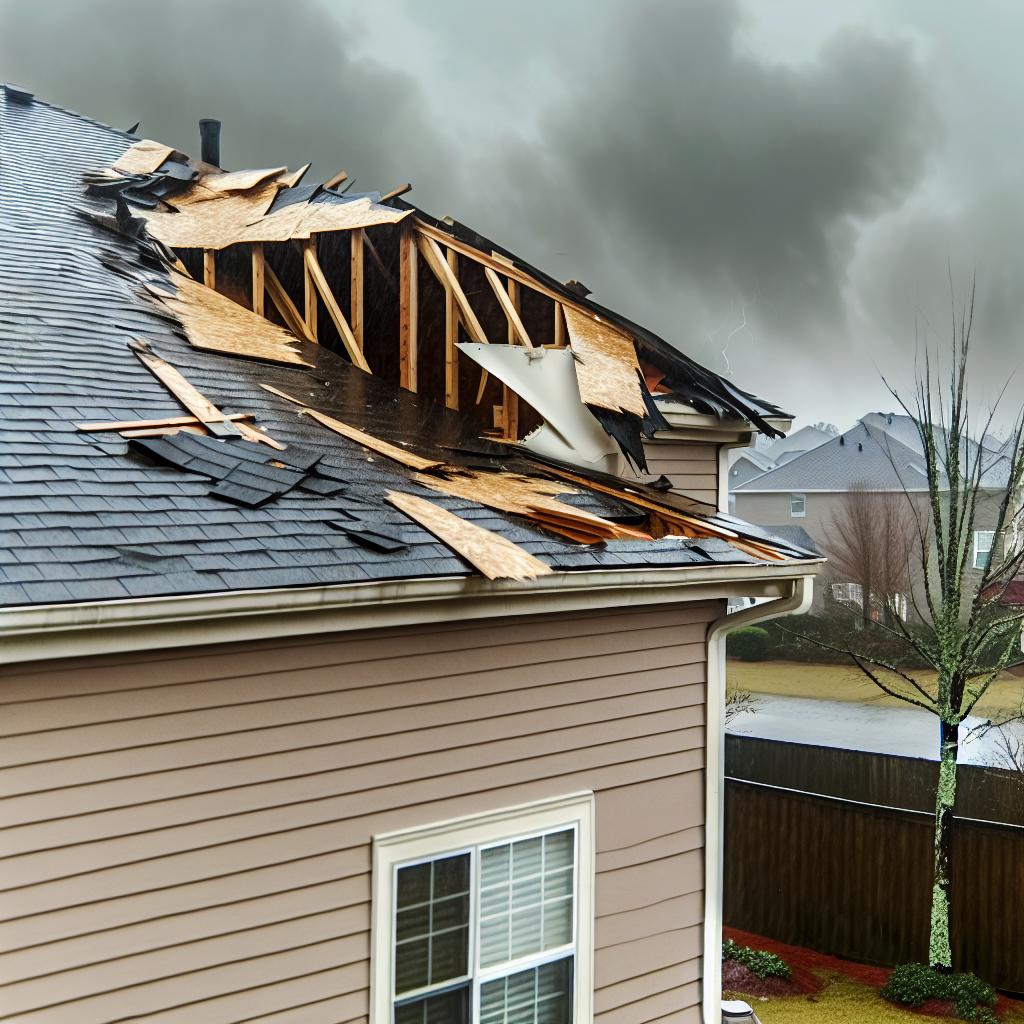
Roof repairs, especially the sudden, stress-inducing emergency ones are hardly a walk in the park. Even if you know what needs to be done, chances are you lack the necessary tools and safety gear for the job. So, when faced with an emergency roof situation, how should one navigate it effectively?
Typically, emergency roof repairs serve as temporary fixes until a more permanent solution can be implemented. However, swift action is key to prevent further damage and keep repair costs in check. With nearly three decades of experience under our belts, we at RoofCrafters emphasize the importance of reaching out to a professional roofing contractor pronto if you suspect trouble brewing up on your rooftop.
Now, if you've stumbled upon this article, chances are you're sensing some serious roof trouble and are eager to get assistance. It’s a good thing you’re here, because we’re about to cover what constitutes an emergency roof repair, the steps to take when disaster strikes, and why speaking with your homeowner’s insurance provider as soon as possible is of the utmost importance. Let’s get started!
What Constitutes an Emergency Roof Repair?
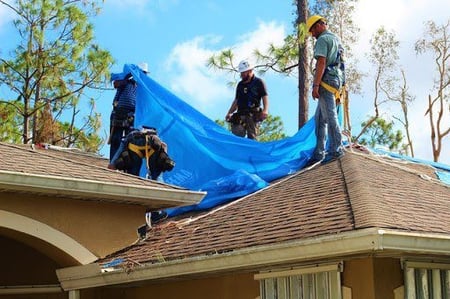
An emergency roof repair typically involves any situation where immediate action is needed to prevent further damage to your home or ensure the safety of you and your family due to issues with the roof. Here are some scenarios that constitute an emergency roof repair:
Major leaks: Significant leaks that are causing water to enter your home, especially during heavy rainfall or storms, require immediate attention to prevent water damage to the interior and potential structural issues.
Storm damage: Damage caused by severe weather events such as hurricanes, tornadoes, or heavy wind storms can compromise the integrity of your roof, so immediate repair in order to prevent further damage or collapse is necessary.
Structural damage: Any structural damage to the roof, such as sagging or areas where the roof has collapsed or is at risk of collapsing, poses an immediate danger and requires emergency repairs.
Fallen trees or debris: If trees, branches, or other debris have fallen onto your roof, they can cause significant damage that needs to be addressed promptly to prevent further destruction and potential safety hazards.
Fire damage: If your roof has been damaged by a fire, even if the fire itself has been extinguished, prompt repairs are necessary to secure the property and prevent further damage from exposure to the elements.
Animal infestations: Damage caused by animals such as raccoons, squirrels, or birds that have made their way into your attic or damaged the roof structure may require immediate repair to prevent further entry and damage.
Hazardous materials: If hazardous materials such as asbestos or lead are exposed due to roof damage, immediate action is necessary to mitigate health risks and prevent contamination.
In general, any situation where your roof is compromised and poses an immediate threat to the safety of occupants or the integrity of your property should be considered an emergency requiring prompt repair. It's essential to have a plan in place and know how to contact a roofing professional or emergency repair service in case such situations arise.
What To Do When Disaster Strikes
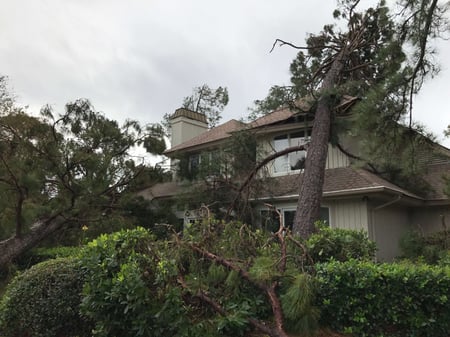
First things first, don't panic. Take a deep breath and assess the situation. Is water pouring in? Is there structural damage? Is it safe to stay indoors? Safety comes first, always. If it's safe to do so, try to contain the damage. Place buckets or tarps to catch dripping water and move any valuable items out of harm's way. But remember, don't risk your safety for stuff, your well-being is priceless.
Next up, reach out for help. Call a professional roofing service ASAP. Many companies offer emergency repair services, so don't hesitate to ring them up. While you wait for help to arrive, do what you can to minimize further damage, but don't attempt any risky DIY fixes, leave it to the pros. If the damage is severe or poses a significant risk, consider evacuating your home until repairs can be made.
Your safety is non-negotiable!
Once the cavalry (aka the roofing experts) arrive, let them work their magic. They'll assess the damage, make temporary fixes if needed, and come up with a plan for permanent repairs. Trust their expertise and let them do their thing.
After the storm has passed and the repairs are done, take some time to assess what happened and how you can prevent it in the future. Maybe it's time for some roof maintenance or upgrades to weatherproof your home. Learn from the experience and be prepared for whatever Mother Nature throws your way next time.
Don’t Wait to Speak with Your Insurance Provider
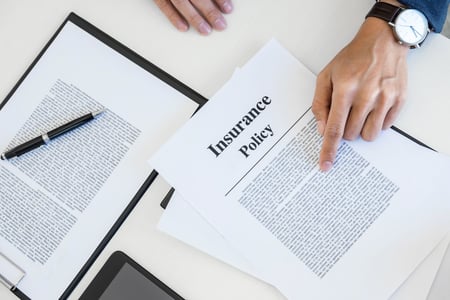
Now, you might be thinking, "I'll deal with insurance later, I have to get this mess sorted first." But, talking to your homeowner's insurance provider ASAP is super important, and here's why.
First off, your insurance policy might cover the damage caused by the storm. The kicker is that there's usually a time limit for filing a claim after the damage goes down. If you wait too long, you could miss out on getting the help you need to fix your roof (or other damages) without shelling out the big bucks from your own pocket.
Plus, your insurance provider can give you the lowdown on what's covered and what's not. They'll break down the nitty-gritty details of your policy, so you know exactly what you're working with. That way, you won't be left scratching your head wondering if that massive tree limb crashing through your roof is gonna leave you in financial trouble.
Here's another reason to hustle: the insurance claim process can take time. There's paperwork to fill out, assessments to be done, and all that jazz. By getting the ball rolling ASAP, you're one step closer to getting your roof back in tip-top shape and your life back to normal.
Last but not least, talking to your insurance provider early on can help you avoid any nasty surprises down the road. They'll give you the 411 on what steps you need to take, what documentation you'll need, and any other hoops you gotta jump through to get your claim sorted. So there you have it, when storm damage strikes, don't wait around. Grab your phone, give your homeowners insurance a ring, and get the ball rolling. Your roof (and your wallet) will thank you later.
Dealing with Emergency Roof Repairs
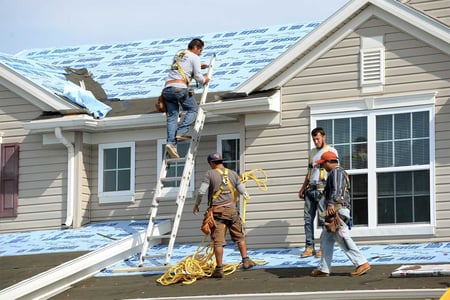
All in all, when disaster strikes your roof, it's crucial to handle the situation with a level head and a sense of urgency, however hard that may feel. Whether it's a sudden leak during a rainstorm, damage from heavy winds, or the aftermath of a fallen tree, the steps you take in response can significantly impact the outcome. Safety should always come first, too! Assess the situation carefully and ensure that you and your loved ones are out of harm's way.
Once safety is secured, reaching out to professionals for assistance is paramount. Whether it's contacting your homeowner's insurance to start the claims process or getting in touch with a reputable roofing contractor, swift action can help mitigate further damage and expedite the repair process.
So, stay proactive, stay informed, and don't hesitate to seek help when you need it. By taking the right steps and staying prepared, you can navigate through the challenges of emergency roof repairs with confidence, ensuring that your home remains safe, secure, and sheltered from whatever Mother Nature throws your way.
At RoofCrafters, our mission is to provide job opportunities for others to thrive and grow while making a meaningful impact within our communities.



